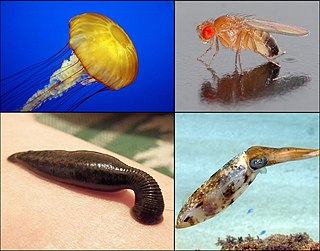
Invertebrates are a paraphyletic group of animals that neither possess nor develop a vertebral column, derived from the notochord. This is a grouping including all animals apart from the chordate subphylum Vertebrata. Familiar examples of invertebrates include arthropods, mollusks, annelids, echinoderms and cnidarians.

The Echiura, or spoon worms, are a small group of marine animals. Once treated as a separate phylum, they are now considered to belong to Annelida. Annelids typically have their bodies divided into segments, but echiurans have secondarily lost their segmentation. The majority of echiurans live in burrows in soft sediment in shallow water, but some live in rock crevices or under boulders, and there are also deep sea forms. More than 230 species have been described. Spoon worms are cylindrical, soft-bodied animals usually possessing a non-retractable proboscis which can be rolled into a scoop-shape to feed. In some species the proboscis is ribbon-like, longer than the trunk and may have a forked tip. Spoon worms vary in size from less than a centimetre in length to more than a metre.
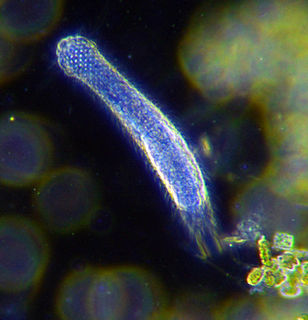
The gastrotrichs, commonly referred to as hairybellies or hairybacks, are a group of microscopic (0.06-3.0 mm), worm-like, acoelomate animals, and are widely distributed and abundant in freshwater and marine environments. They are mostly benthic and live within the periphyton, the layer of tiny organisms and detritus that is found on the seabed and the beds of other water bodies. The majority live on and between particles of sediment or on other submerged surfaces, but a few species are terrestrial and live on land in the film of water surrounding grains of soil. Gastrotrichs are divided into two orders, the Macrodasyida which are marine, and the Chaetonotida, some of which are marine and some freshwater. Nearly 800 species of gastrotrich have been described.
Gnathostomulids, or jaw worms, are a small phylum of nearly microscopic marine animals. They inhabit sand and mud beneath shallow coastal waters and can survive in relatively anoxic environments. They were first recognised and described in 1956.

Priapulida, sometimes referred to as penis worms, is a phylum of unsegmented marine worms. The name of the phylum relates to the Greek god of fertility, because their general shape and their extensible spiny introvert (eversible) proboscis may resemble the shape of a human penis. They live in the mud and in comparatively shallow waters up to 90 metres (300 ft) deep. Some species show a remarkable tolerance for hydrogen sulfide and anoxia. They can be quite abundant in some areas. In an Alaskan bay as many as 85 adult individuals of Priapulus caudatus per square meter has been recorded, while the density of its larvae can be as high as 58,000 per square meter.
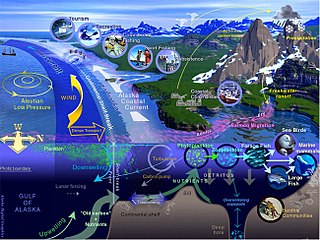
Marine life, sea life, or ocean life is the plants, animals and other organisms that live in the salt water of seas or oceans, or the brackish water of coastal estuaries. At a fundamental level, marine life affects the nature of the planet. Marine organisms, mostly microorganisms, produce oxygen and sequester carbon. Marine life in part shape and protect shorelines, and some marine organisms even help create new land.

Marine invertebrates are the invertebrates that live in marine habitats. Invertebrate is a blanket term that includes all animals apart from the vertebrate members of the chordate phylum. Invertebrates lack a vertebral column, and some have evolved a shell or a hard exoskeleton. As on land and in the air, marine invertebrates have a large variety of body plans, and have been categorised into over 30 phyla. They make up most of the macroscopic life in the oceans.

Macrodasyida is an order of gastrotrichs. Members of this order are somewhat worm-like in form, and not more than 1 to 1.5 mm in length.

Chaetonotidae is a family of gastrotrichs in the order Chaetonotida. It is the largest family of gastrotrichs with almost 400 species, some of which are marine and some freshwater. Current classification is largely based on shape and external structures but these are highly variable. Molecular studies show a high level of support for a clade containing Dasydytidae nested within Chaetonotidae.
Phoronopsis californica is a species of marine horseshoe worm in the phylum Phoronida. It was first described as a new species by William Hilton in 1930 when he found it at Balboa Bay in Newport Beach, California.
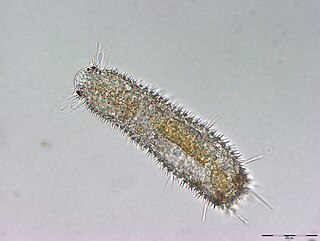
Thaumastoderma heideri belongs to the phylum Gastrotricha and the order Macrodasyida, which are worm shaped, mainly marine species of meiofauna. They live in coarser sand and like the rest of the gastrotrichs their movement is very slow. The family Thaumastodermatidae includes more than 130 species and it can be found widely across the globe.

Paradasys subterraneus is a Gastrotricha with a bodylength up to 0.6 mm. The species is marine.

Lepidodermella squamata is a freshwater species of minute worm in the phylum Gastrotricha.

Polydora ciliata is a species of annelid worm in the family Spionidae, commonly known as a bristleworm. It is a burrowing worm and is found in the northeastern Atlantic Ocean and some other parts of the world.

Tubulanus superbus, commonly known as the football jersey worm, is a species of ribbon worm in the phylum Nemertea. Found in the northern Atlantic Ocean, the North Sea and the Mediterranean Sea, it occurs from the lower shore down to about 80 m (260 ft), on sand or gravel.

Syllis prolifera is a species of polychaete worm in the family Syllidae. It has a cosmopolitan distribution. It was first described in 1852 by the Russian/German zoologist August David Krohn who gave it the name Syllis prolifera.

Priapulus caudatus known as the cactus worm, is a marine invertebrate belonging to the phylum Priapulida. It is a cylindrical, unsegmented worm which burrows in soft sediment on the seabed. It has a circumpolar distribution.
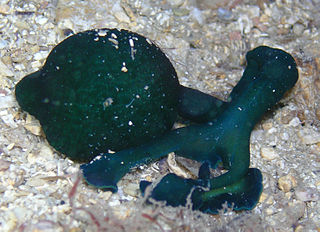
Bonelliidae is a family of marine worms noted for being sexually dimorphic, with males being tiny in comparison with the females. They occupy burrows in the seabed in many parts of the world's oceans, often at great depths.

Themiste pyroides is a species of unsegmented benthic marine worm in the phylum Sipuncula, the peanut worms. It occurs in the intertidal zone and shallow water in the western Atlantic Ocean and the northeastern Pacific Ocean. It lives in crevices and under rocks, extending its "crown" of branching tentacles into the surrounding water to feed.
Diplodasys is a genus of worms belonging to the family Thaumastodermatidae.

















